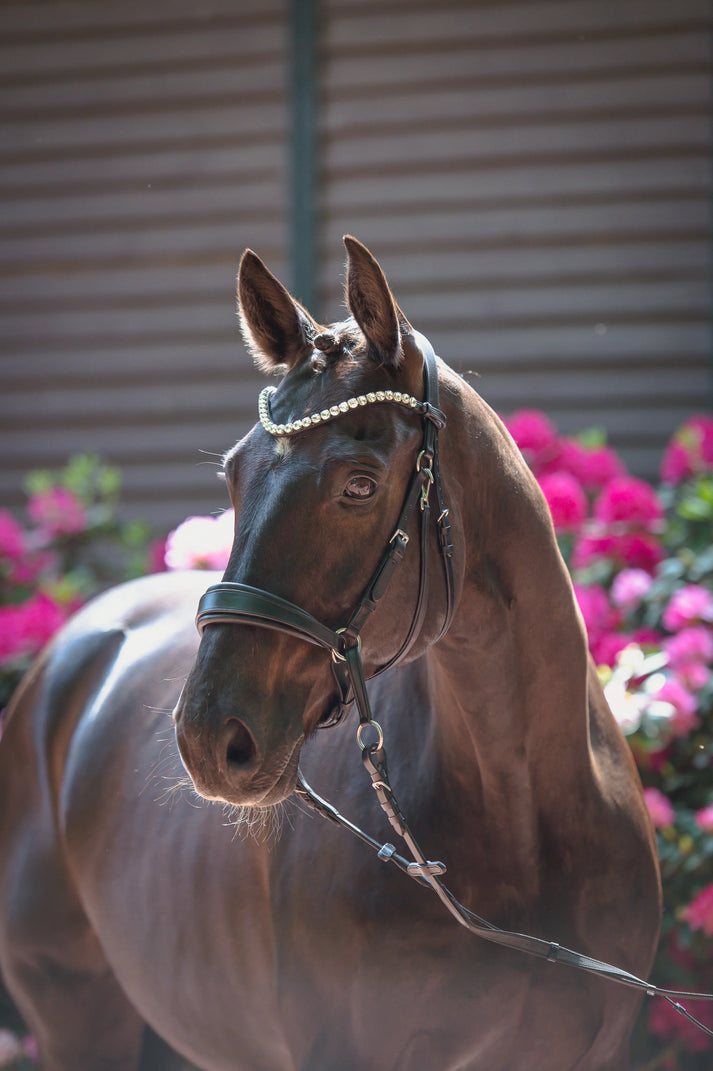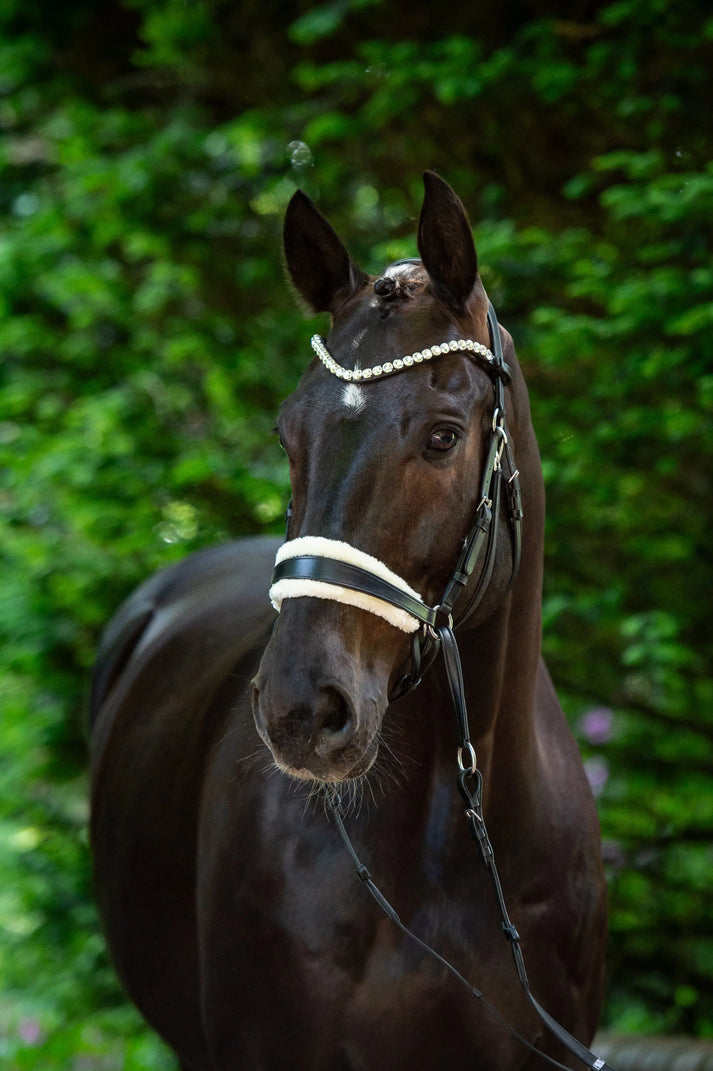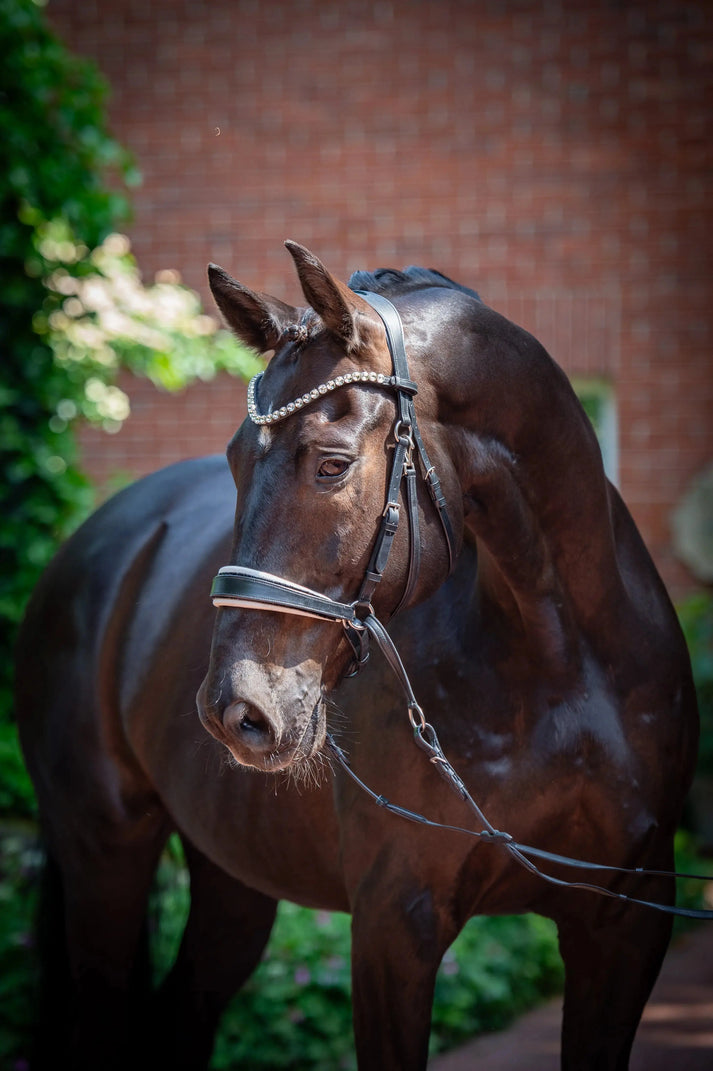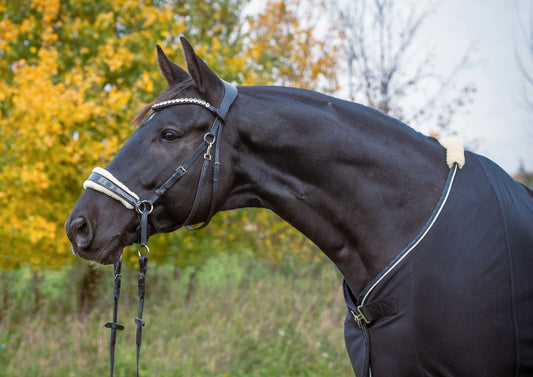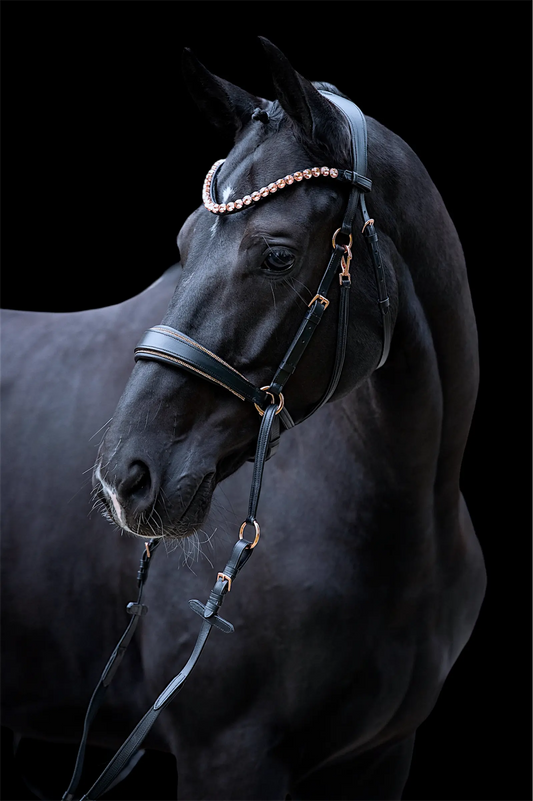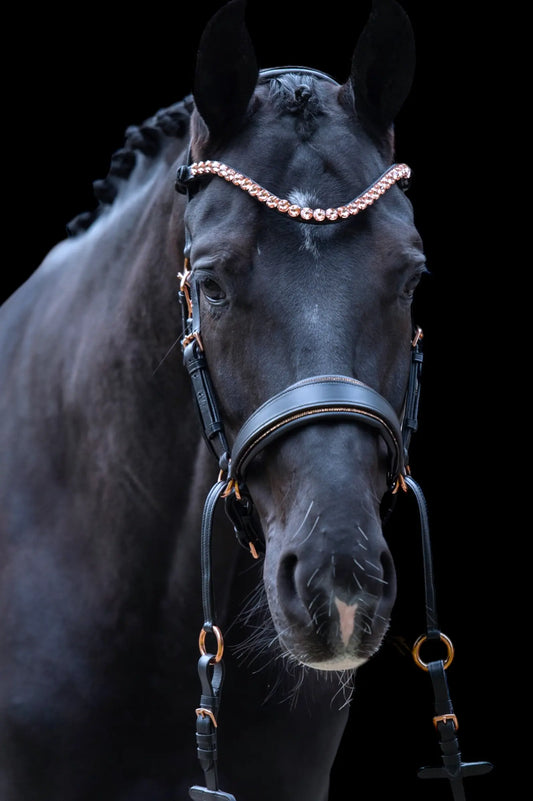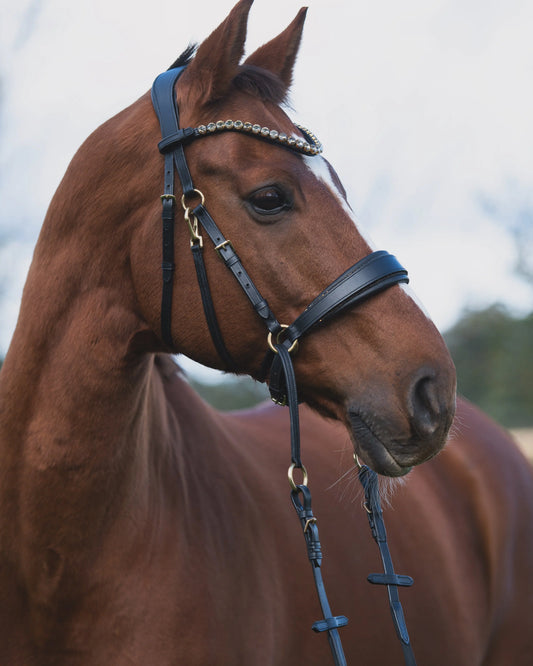Timing of the help - feel the right moment
Share
Timing of assistance – Feeling the right moment
Riding isn't just about implementing technique. It's about a sense of the right moment and the trust that comes with it. Riding is rhythm—the interplay of movement and pause, of engagement and release. The timing of our aids is crucial to giving the horse the space to develop and creating a harmonious connection.
Timing of assistance
We often see riders hold their aids for too long or apply them too quickly, which can unsettle the horse or prevent it from responding to the aids independently. The art of subtle aid application lies in giving the impulse at the right moment and then releasing. This interaction allows the horse to respond to us and builds the trust that is so important for a true partnership in the saddle.
How do I find the right timing?
The timing of aids is a skill that develops with patience and sensitivity. Here are two key approaches that help us identify the right moment and deliver our aids in a way that is understandable and supportive for the horse:
1. Impulse and letting go
Instead of applying constant pressure, apply short, precise impulses and then release immediately. A gentle vibration with your leg followed by a release gives the horse a clear direction without restricting its movement. This helps the horse respond to the aids independently without feeling "restrained."
How does this work in practice?
• Give a short, gentle impulse with your leg – for example by gently vibrating it – and let the horse respond.
• As soon as the horse responds, immediately withdraw the aid. Releasing the aid signals to the horse that it should maintain its direction and has the freedom to move in rhythm.
• Observe how the horse responds to the freedom given by letting go. The more subtle these cues are, the more the horse will encourage a natural, balanced posture.
By giving this kind of aid, we create a flow of communication in which the horse learns to pay attention to quiet signals and not to react with constant pressure.
2. Ride transitions purposefully
Transitions aren't just changes in pace; they offer us valuable moments to refocus the horse and bring it back into balance. A consciously ridden transition—whether from walk to trot, trot to canter, or back again—challenges and encourages the horse's attention and strengthens the connection with the rider.
Transitions for more balance and concentration
• Preparation: Before you begin the transition, bring the horse into a balanced position and make sure it is prepared for your aids.
• Initiate the transition: Use leg and weight aids to guide the horse into the new rhythm. Light pressure followed by a release will help the horse make the transition smoothly.
• Feedback and adjustment: Once the transition is complete, check the horse's balance and attention. Ensure the horse remains alert and continues to move in rhythm with the new gait.
Targeted transitions help to keep the horse attentive and focused without overtaxing it.They are ideal for practicing the timing of the aids and give us the opportunity to bring the horse back into an active and attentive posture.
Why is timing so important?
By tactfully applying our aids and then releasing them, we give the horse the freedom to unfold its movement. This freedom builds trust and promotes a natural flow of movement, in which the horse not only responds to our aids but actively participates. It feels that it has the space to move and that we are supporting it rather than controlling it.
A horse that pays attention to subtle aids will become increasingly more attentive and willing to respond to our input. With the right timing, the horse becomes calm and confident because it can trust that the aids are only given at the crucial moment and are not constantly present.
Conclusion: The value of giving subtle aids
The art of timing is one of the most important aspects of harmonious cooperation between horse and rider. A short impulse at the right time, followed by a release, allows the horse to trust us and freely unfold its movement. Transitions become valuable moments to keep the horse balanced and alert.
Try it: During your next training session, set the goal of delivering your aids precisely and tactfully, then letting go. Observe how your horse responds and how much more refined your communication becomes. Timing is the key to a true partnership in the saddle—a relationship based on trust and mutual respect.

